Diversity, Equity, and Inclusion (DEI) in the workplace have become integral to the success and growth of modern organizations. At TemPositions, we recognize the need to adapt to the emerging trends currently shaping the DEI landscape. Looking to find diverse staff? TemPositions can help.
In this blog post we will explore seven DEI workplace trends that are transforming how organizations approach inclusivity. Additionally, we’ll provide outbound links to three reputable sources for further reading on DEI in the workplace.
1. Intersectionality and Holistic Inclusion
Recognizing intersectionality means understanding that individuals possess multiple aspects of diversity that can overlap, such as race, gender, sexuality, and ability. Embracing holistic inclusion entails addressing the unique experiences and challenges faced by employees with diverse backgrounds. Organizations that adopt intersectionality and holistic inclusion as core principles foster a more comprehensive and supportive DEI work environment.
2. Data-Driven Diversity Strategies
To increase DEI in the workplace, employers are leveraging data to develop evidence-based DEI strategies. For example, employers are analyzing data related to employee demographics, hiring practices, pay equity, and promotion rates allows organizations to identify areas for improvement and measure progress. Data-driven approaches help companies make informed decisions and hold themselves accountable for their diversity goals.
3. Employee Resource Groups (ERGs)
ERGs, also known as affinity groups or business resource groups, are voluntary, employee-led communities that provide a platform for underrepresented groups to connect, share experiences, and advocate for change. These groups foster a sense of belonging, offer professional development opportunities, and act as a feedback mechanism for organizations seeking to enhance their DEI workplace efforts.
4. Allyship Programs and Training
Organizations are investing in DEI allyship programs and training to empower individuals to actively support and advocate for colleagues from marginalized groups. Allyship fosters a collaborative work environment and encourages allies to challenge biases, amplify underrepresented voices, and champion DEI workplace practices.
5. Cultivating Inclusive Leadership
Inclusive leadership entails embracing DEI perspectives, valuing employee input, and creating a culture of psychological safety. Organizations are recognizing the importance of inclusive leadership in driving innovation, retaining top talent, and promoting employee engagement. Overall, leaders who prioritize DEI foster an environment where everyone feels valued and empowered to contribute.
6. Addressing Microaggressions and Bias
Microaggressions are subtle, often unintentional acts or statements that marginalize individuals. Therefore, organizations are actively addressing microaggressions and bias through training programs, policy updates, and creating safe spaces for open dialogue. By addressing these issues head-on, organizations can foster a more respectful and inclusive workplace for all.
7. Remote Work and Inclusivity
The COVID-19 pandemic accelerated the adoption of remote work. Of course, remote work is inclusive in terms of flexibility. However, it also presents new challenges in maintaining an inclusive, DEI work environment. Organizations are implementing strategies to ensure remote employees have equitable access to resources, opportunities, and company culture. Additionally, they are embracing digital tools for collaboration
DEI In The Workplace Is Here To Stay
To successfully promote DEI in the workplace, organizations must stay informed and adapt to emerging trends. By embracing intersectionality, leveraging data, supporting ERGs, fostering allyship, cultivating inclusive leadership, addressing bias, and considering remote work inclusivity, organizations can create a workplace culture that values diversity, promotes equity, and embraces inclusion.
Finally, this blog post only scratches the surface of incorporating DEI in the workplace. Be sure to follow the outbound links provided to delve deeper into each topic and explore additional resources on diversity, equity, and inclusion in the workplace. Together, we can build a more inclusive and equitable future for all.
Want to know more?
TemPositions hosts webinars on myriad concerns, diversity among them. Sign up for TemPositions’ next HR Roundtable here. This SHRM certified event will earn you or your HR team members 1.5 professional development credits.






